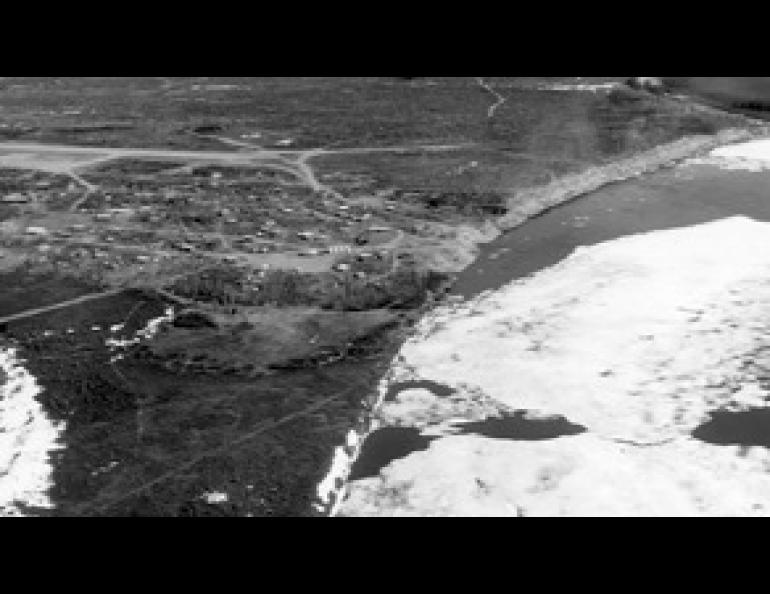
River Breakup
A few years ago Dr. Bowling of the Geophysical Institute determined the correlation coefficients between the dates of breakup and various meteorological parameters -- temperature, precipitation, and so forth. A high correlation coefficient would imply that the parameter could be used to estimate the date of breakup. Unfortunately the only parameter with a high correlation turned out to be average air temperature during April. Since the Tanana Ice Classic tickets are not sold after the first week in April, this information is not helpful in winning the lottery. Apparently breakup is a very complex event, with too many variables to be analyzed easily. However, there are a lot of interesting phenomena that go on even before breakup begins.
Water flow in any sizable stream does not stop when the ice cover forms. Some sections of a river, either in rapids or in fast-flowing reaches near the river bank, may stay open all winter, due both to the mechanical action of the water which prevents the formation of ice bridges, and to a small amount of frictional heating. Even in ice-covered rivers, some side channels may freeze to the bottom, but sinuous corridors of flowing water still remain under the ice. The water is often laden with fragile ice crystals, which are typically disc-shaped crystals, perhaps 1/16 inch in diameter. The walls of the corridors of flowing water consist of porous agglomerations of fragile ice, which extend partially or completely to the river bottom, blocking the river flow. These fragile ice blockages grow downward from the surface ice as ice crystals in the water deposit on irregularities on the ice cover. The water races down the corridors, sometimes under pressure due to the presence of the ice.
When breakup starts, the returning sun begins to melt snow on the ice cover and in the near-shore area. The melt water flows to the river banks and accelerates the melting along the shore. This localized melting acts as a feedback mechanism to cause more melting, since wet snow is darker and absorbs solar radiation more readily than dry snow. So it's not uncommon to see shoreline cracks and flooding as the first evidence of breakup.
When the snow cover on the surface of the ice melts, the deterioration of the ice accelerates: ice absorbs solar radiation better than does snow. Solar radiation penetrates into the ice, with the grain boundaries between ice crystals melting first. Water percolates downward through these tiny cracks, producing vertical planes or columns within the ice. The deteriorated ice fabric is known as candled ice because it does look like a layer of vertically packed candles.
Breakups tend to follow one of two general patterns: relatively gradual with considerable early melting, or somewhat sudden with high flooding probability. The first pattern occurs following a warm early spring during which the ice cover undergoes extensive candling and is therefore quite weak. The second pattern occurs if warm weather is delayed until late in the season and arrives suddenly, producing extensive melting in the river basin. The rapid increase in melt water causes a surge or a sudden increase in river discharge which increases the upward pressure on the ice. If the ice breaks free during the surge, it can be carried downstream; if not, flooding is likely.
In either case, most of the river ice is melted by the slightly warmer river water as the ice is carried downstream, and only a fraction of the total river ice actually flows past the mouth of the river. It is apparent that melting is a major part of breakup; perhaps the process should be called meltdown instead of breakup.





